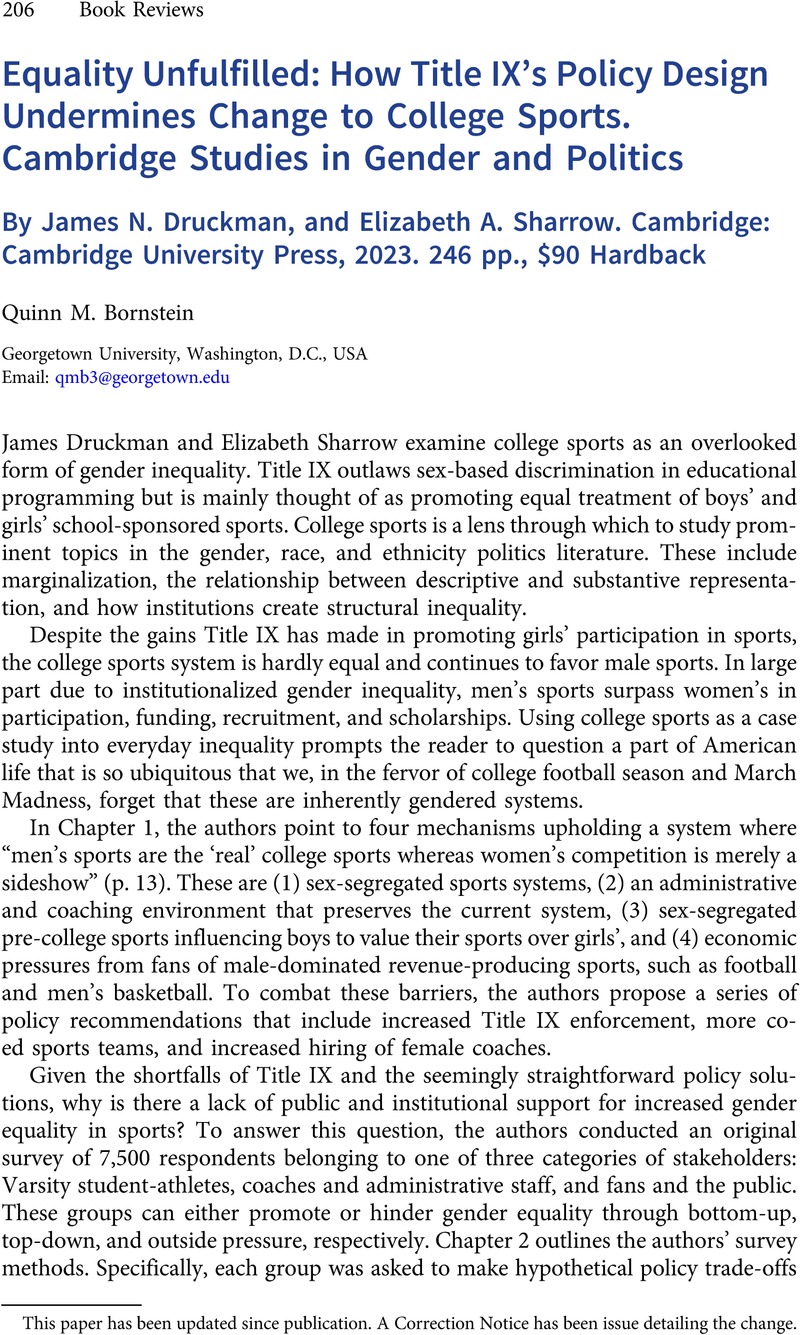Crossref Citations
This article has been cited by the following publications. This list is generated based on data provided by Crossref.
Bornstein, Quinn M.
2024.
Equality Unfulfilled: How Title IX’s Policy Design Undermines Change to College Sports – CORRIGENDUM.
The Journal of Race, Ethnicity, and Politics,
p.
1.



